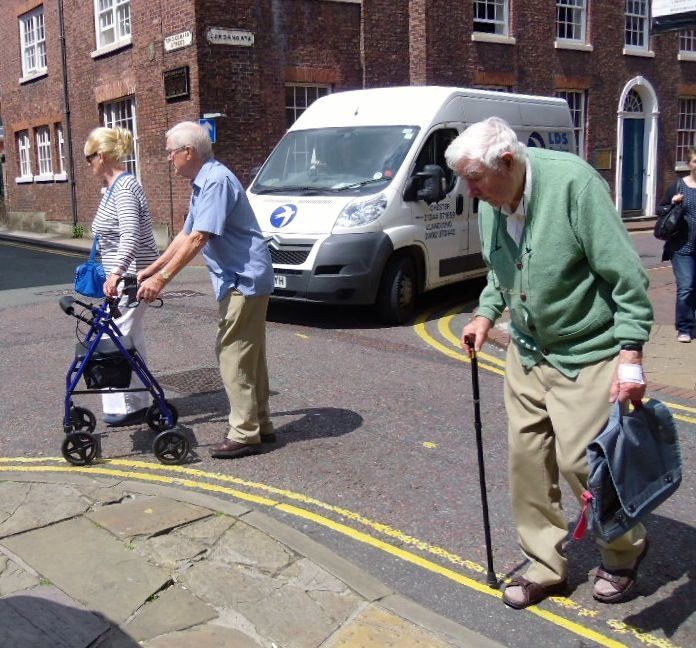Insights into the Cost of Assisted Living: Quality and Care
Insights into Assisted Living: Care, Cost, and Quality - Part 2" delves into the realities of assisted living, highlighting the gaps in care for seniors with special needs and the hidden costs burdening families, urging the need for industry reform

Part 2 of 4 series
The illusion of Luxury in High End Assisted Living Communities
Despite their beautiful exteriors, grand dining rooms and luxurious lobbies, high end assisted living facilities often hide the extra costs and variable care. They charge for every little thing, from room maintenance to health checks and beyond the standard living cost, adding up to the overall cost of Assisted Living.
Understanding the different Assisted Living options and their costs is key. Potential residents or their families should research and know the local market rates and amenities to make informed decisions.
When I tell my clients that Assisted Living is one of the dangerous serivces of the healthcare system they think I’m exaggerating. After all, how could these fancy places with chefs in the dining rooms and Steinway pianos in the lobby be dangerous in any way?
This FrontLine Documentary exposes the failings of a social model when trying to provide medical care in assisted living
Challenges in Budget Friendly Assisted Living Facilities
At the other end assisted living facilities for those on Social Security face different problems. These facilities without the amenities of their more expensive counterparts often skimp on the essentials like food, quality and heat. That impacts the well being of the Assisted Living residents.
Residents in these facilities don’t have access to the amenities of the high end ones and unfortunately many feel voiceless
One thing that is common in all Assisted Living facilities is they primarily follow a “social model” not a medical one. Yet if you visit an Assisted Living Facility any day of the week you’ll find residents:
- Using oxygen
- Using walkers
- Dealing with various medical conditions like diabetes and kidney disease
- In memory care, many are left in bed, not being changed or left to wander and fall.
A recent study even shows that as many as 2/3 of Assisted Living residents have some form of dementia.
The Social Model and its Limitations
Most Assisted Living communities follow a social model of care. This focuses more on daily living and social activities rather than medical care. This is a big problem for residents with chronic medical conditions or those who need skilled nursing care.
I recently saw a med tech giving meds to a resident in one of these facilities. I struck up a conversation with the resident and noticed she was chewing all the pills. I asked the med tech why he didn’t give her the pills with applesauce or yogurt to help her swallow?
He said none of the 156 clients needed assistance with swallowing and that he was sure all the meds could be chewed even though he didn’t have information on her specific meds. Med techs in assisted living receive a short course on medications from the pharmacy the facility uses. These med techs, have no knowledge of the swallowing mechanism and how simple techniques can help a person with swallowing difficulties can make a difference.
These Assisted Living facilities are “social models." These facilities accept residents in wheelchairs with needs from incontinence care to insulin injections wound care and dementia.
Definition and Purpose of Assisted Living
Safety Issues in Assisted Living Facilities
Assisted Living facilities rely on home care agencies to provide intermittent care. But issues arise with insulin dependent clients. Those with diabetes, may have trouble with injections due to poor eyesight. Unfortunately insurance doesn’t cover this ongoing service. Yet low end facilities take these residents in before figuring out how to provide the care. Profit often takes precedence over safety. Insurance also doesn’t cover ongoing services for those with chronic illness.
For seniors with multiple medical conditions the “social model” of Assisted Living is no longer safe or acceptable living arrangement. Let me share an incident with one of my clients She needed an electric wheelchair due to limited mobility . She had few opportunities to leave the facility. She decided one beautiful day, to do to the local Chinese restaurant. While navigating a narrow side walk on her way to have lunch her wheelchair tipped over. The sidewalk was too narrow for any wheelchair. An ambulance to get assistance and she ended up in the ER for assessment.
I was heading to the same place for lunch and found her on her side, still in her chair. During this ordeal, I noticed her pants were wet and she hadn’t been changed before leaving the facility. When I told the ambulance crew and hospital staff about this, they explained that the assisted living facility is known in the area for poor care.
When I brought this up with the facility administrator he was unimpressive. It came down to finances, she was a high paying client who had transitioned to Social Security and they had to cut back on her care. According to him his staff was doing a great job. The social model focuses on residents social life. They fail in proivdig the needs of those with medical conditions.
In another instance , I saw the same client being transferred from her wheelchair to the bed improperly. The way they were transferring her was causing her pain.
I suggested a better way to do it. After all, I worked in physical rehab and often taught family members how to transfer their loved one. But the aides refused, citing their experience and dismissing my suggestions.
I was a member of an aides forum on FB. I witnessed some very disturbing posts from an aide in an Assisted Living facility. She said the med tech . She shared with the group that she was throwing away meds meant for the residents. She was putting the medications in the needle disposal box so she could go undetected.
These are just a few examples of the safety issues that can happen in Assisted Living facilities and board-and-care homes.
Medication Management: A Critical Component of Assisted Living Resident Care
In many Assisted Living communities the task of medication management is being delegated to aides who may have very little training. This practice raises big concerns about the safety and effectiveness of medication administration a critical part of resident care in these settings. Medication management in Assisted Living encompasses many responsibilities from ensuring the right dosing to monitoring for side effects and interactions between different meds.
The risks are many. First aides with limited training may not have the knowledge to understand the complexities of different meds. They are unaware of dosing requirements, side effects and interactions with other meds. They are unaware of the issues of swallowing that impacts the residents ability to take their meds in a safe manor.
This knowledge gap can lead to errors in medication administration such as wrong dosing, missing doses or giving the wrong med. This can have serious, even life threatening consequences for the resident.
Another concern is the lack of oversight and quality control in medication management in these facilities. Without the presence of skilled nursing professionals or RNs, there is often no one to supervise to ensure medication is being administered correctly and safely. This lack of oversight increases the risk of medication errors and diminishes the quality of care to the resident. While there are many facilities that have an RN on staff, if they are not passing the medications, they are only overseeing the process. The med techs are still makig mistake.
I was a DON ( Director of Nursing) in an upscale assisted living. That was a 350 bed facility that mixed those with medical needs in with independent residents. I came in one day, and was called to a room where a resident had fallen in the bathroom. I called the ambulance. While waiting for the ambulance to come, I gathered all the important paperwork, which includes medication sheets, health history etc. It was while getting this paperwork prepared, I found on his medication sheet, someone had discontinued his insulin. The man was experiencing high blood sugar, If we have not found him when we did, he could have died.

In many Assisted Living facilities the medication management process is not individualized. Each resident’s meds can vary greatly and requires a customized approach to their care. But, aides with little training may struggle to give the right meds, in the right route and at the right time.
There is another side to this. Many assisted living facilities have families pay for a medication system where all the pills are put in little packets. This system makes it easy for the aide to look at the time that meds are to be given and give them at that time. The problem with this system is, if a medication was discontinued, or another medication was added before the months cycle is over there can be negative consequences. Medications are missed, Medications that were stopped, are still being given. It happens more than you think.
Finally the communication between healthcare providers and Assisted Living staff is critical in medication management. Poor communication can result in delays in updating medication orders. Families are responsible to take their loved on to the doctors and health care providers. When they return to the facility, the family must inform the facility of any changes in care plan or medications.
This is when important things may get missed. The family is still responsible to make sure the medications will be ordered or therapies ordered will be provided.
Not conveying important information about the resident’s changing health status complicates the safe administration of meidcations.
The practice of delegating medication management to minimally trained aides in Assisted Living is a big risk to the health and safety of the resident. This highlights the need for more training, better oversight, individualized care and better communication between healthcare providers and Assisted Living staff. Addressing these issues is key to making sure residents get the safe and effective medication management they need to be well.
This video explains the difference between the social model, vs medical model of nursing homes
Inadequate Care for Residents with High Needs in Assisted Living Facilities
Assisted Living communities often bridge the gap between independent living and nursing home care . They are admitting residents with many medical conditions. But these facilities struggle to provide consistent and adequate care for these residents. Especially those who need specialized treatments like insulin injections or wound care. This is even more challenging in Assisted Living facilities that rely on external home care agencies for intermittent care. They have a big gap in the quality and continuity of services being offered. With the changes in Medicare, home care benefits have been cut. This is leaving the family to privately pay for needed services, as part of the a al carte approach in Assisted Living.
Challenges in Managing Complex Medical Needs
Residents with conditions that require skilled nursing care like diabetes management or wound treatment need more than the standard personal care services . They require certain medical services offered in Assisted Living communities.
The staff in many of these facilities primarily trained to assist with daily living activities and basic medication management. They focus on making sure the social needs of the resident are met. They may not have the expertise for more complex medical tasks. This limitation can lead to inadequate blood sugar monitoring for diabetic residents or insufficient wound care. Changes in Medicare home care benefits are forcing family members to pay out of pocket for those services.
Personal care assistance helps residents maintain independence while getting the necessary support. It ensures individual needs are met without the need for advanced medical care.
Dependence on External Home Care Agencies
To address these specialized needs some Assisted Living facilities rely on external home care agencies to provide intermittent skilled nursing services. But this arrangement often leads to inconsistent care. Home care may not be fully integrated into the resident’s overall care plan. A gap in communication between the regular staff of the Assisted Living facility and the visiting healthcare professionals occurs. This lack of coordination can result to overlooked health issues and delayed medical interventions.
Here's one example that comes to my mind. As I explained before, I worked in a very large upscale assisted living facility. I was walking down the hall one day, making rounds. An elderly gentleman came up and introduce himself. I encouraged him to go outside and enjoy the ice cream social. That is when I learned he had a wife on hospice! What I discovered was heartbreaking. I had been in the building a few weeks. I had no idea that I had a resident on hospice. This elderly man was privately paying for someone to sit with his wife during the day. But, at 3 pm, he was her sole caregiver. He missed dinner every night, because he was caring for her. She was not being turned, fed, given skin care. The aides that worked in the building would check her once a shift. This should not have happened. Everything in assisted living is a la carte. You need more care, you must pay out of pocket for these extra services. The elderly man, was in the early stages of dementia.
So, when you are considering Assisted Living as an option, it is important to understand, the a la carte approach means paying out of pocket for anything extra.
Impact on Assisted Living Residents’ Health and Well-being
The result of this inadequate care is severe for residents with high medical needs. Without consistent and skilled medical care they may decline in health. They may experience complications, hospitalizations or overall decline in quality of life. And the emotional and psychological impact of not being cared for, can affect overall well being and morale of these residents.
Understanding senior living costs is important as they vary greatly by location and service offerings. Analyzing median costs vs average costs gives a clearer picture of what to expect.
More Training and Staffing Needed
Assisted living does not have the oversight that nursing homes are subjected to. These increased challenges to provide care to residents with more complex medical needs or those with dementia care, needs to be addressed.
There is a need for more training for assisted living staff to handle more complex medical conditions. There is also a need for the Assisted living facilities to staff according to acuity needs. Here is an example that I've witnessed over and over again. Memory care units require consistent staff to meet the needs of tier residents. They also need to staff to meet the acuity levels of the residents on that unit. Two or three aides on a unit, that has 20 residents with dementia. Residents in memory care need assistance with everything, These residents need assistance with dressing, eating, toileting. Many become fall risks and wander the unit.
I had one client call me to inform me, she goes to visit her 90 yr old husband in a memory care unit. She is 87 urs old and not in the best health, Everyday, she comes around 11 am and stays to 5 pm. Everyday, she finds her husband wet sheets and reeking of urine. He has not been fed or even offered water to drink. Surprisingly, that is not what she wanted to talk to me about.
Her husband was a fall risk. She wanted to get an chair and bed alarm for him. The facility told her that these alarms were not permitted in the facility. There was no reason given. But, as my client explained, the memory care unit had several fall risks. She witnessed many residents be sent out to the hospital because of a fall. Some never returned. She was being proactive. The facility was staffing 2 aides per shift. The needs of the residents on the unit were greater than the care provided. The families pay over $8000 a month for these services! The money is there to staff better.
The problem I have with assisted living is, the social model requires a resident to direct their care. That is not possible when you have dementia. Sadly, in this facility, the concerns of the wife were also ignored.
Increasing the staffing of qualified healthcare professionals like RNs and CNAs within these communities will greatly improve care for residents with high medical needs.
Assisted living pricing is based on individual resident needs and services provided. Base fees cover basic services and extra charges apply for additional care so personalized assessments and clear legal documentation is required to clarify pricing models.
Collaboration and Integrated Care Approaches
An integrated care approach between assisted living staff and external healthcare providers is key, if the social model is going to be comtinued to be the model of care. This will ensure all aspects of a resident’s health is monitored and managed well with clear lines of communication between caregivers. Regular meetings, shared care plans and coordinated interventions will greatly improve care continuity and quality.
Veterans benefits from the Department of Veterans Affairs (VA) can help pay for assisted living for eligible veterans like the Aid & Attendance Benefit. Knowing the eligibility requirements and potential financial assistance available is important for those who need long term care.
While assisted living facilities are part of the senior living spectrum, caring for residents with higher medical needs is a big challenge. More training, staffing and coordination with external healthcare providers is needed to ensure these residents get the comprehensive and consistent care they need and deserve.

Case Studies: The Reality of Assisted Living Care
The reality of assisted living can be far from its promise especially for residents with specific care needs. Real life examples and case studies from various assisted living communities give a glimpse into the actual experience of seniors especially those with limited mobility or complex medical conditions. These cases highlight the need for change in the current assisted living model, a big gap between the level of care needed and care provided.
Assisted living prices vary greatly by location with some areas having higher costs due to luxury facilities and economic conditions. Understanding median costs vs average costs is important to get a true picture of assisted living costs.
Seniors with Limited Mobility
One example is a senior with limited mobility. Despite living in a facility that claimed to offer full personal care and supportive living this resident faced ongoing neglect and inadequate care. Issues ranging from insufficient assistance with daily living tasks to delayed response to mobility related needs. Neglect not only compromises physical health but also mental and emotional well being of residents.
Inadequate Response to Medical Emergencies
Another case I discussed earlier is my resident with diabetes. A condition that requires consistent medical care and skilled nursing attention. The assisted living facility operating under a social model was not equipped to manage his fluctuating blood sugar levels. There was no immediate medical intervention when blood sugar levels went high or low. This resulted in avoidable health crisis. This further shows the facility’s inability to care for its residents medically.
Memory Care Units
Memory care units within assisted living communities are supposed to be specialized environments for residents with cognitive health issues like dementia. But my personal experience has shown that care in these units is woefully inadequate. Residents wandering unsupervised or not getting appropriate mental stimulation and emotional support is not uncommon showing a big lapse in memory care. Staffing is not adequate to meet the needs of the residents. Again, the social model requires the resident to be able to direct their care, make their needs known. This is not possible in assisted living setting.
Assisted Living Costs and Fees
Assisted living costs vary by location, level of care and services. Average cost of assisted living in the US is around $5, 305 a month. That translates into $64,200 The average cost for memory care in US is$6,935/ month. That is $83, 220 a month. Assisted living costs include private living quarters, three meals a day, 24 hour support with activities of daily living (ADLs) and social activities.
Assisted living costs can be broken down into different components: room and board, meals and care services. Assisted living costs can be compared to other senior care options like in-home care and nursing facility care. The 2023 Genworth Cost of Care Survey has information on average cost of assisted living by state.
Finding the Right Assisted Living Community
Finding the right assisted living community can be overwhelming but there are several factors to consider when making a decision. These factors include level of care needed, size of living quarters, location and amenities.
Local care advisors can guide you through the process of choosing an assisted living facility. They can provide expert advice on local care options and tour local communities with you to help you find the best fit.

Assisted Living Regulations and Accreditation
Assisted living regulations vary greatly across the US. States have different requirements on staffing, training, facility size and safety. These factors impact the cost of operation of a facility.
Assisted living facilities are regulated by state and federal agencies and many are accredited by national organizations like Commission on Accreditation of Rehabilitation Facilities (CARF) and Joint Commission. Accreditation means assisted living facilities meet certain standards of quality and safety.
It’s important to research the regulations and accreditation of assisted living facilities in your area to ensure you find a facility that meets your needs and provides quality care.
The Need for Change
These real life examples show the need for comprehensive change in the assisted living industry. This change should include: more training for staff especially those dealing with residents who need skilled nursing care; better oversight and accountability mechanisms; and facilities being properly staffed to meet the needs of their residents from independent living to those who need more medical and personal care.
In summary, these cases show us the gaps in care in assisted living. They highlight the need for a more comprehensive and responsive care model to meet the diverse and often complex needs of assisted living residents. We must address these issues to make assisted living live up to its promise of a safe, supportive and nurturing environment for all seniors.
I’ll continue with the perspective of Emeritus and Assisted Living Federation of America (ALFA) on Assisted Living.
First, let me share Emeritus response to the Frontline story here
Previous article
Assisted Living Realities: Navigating the Social Model's Challenges in Senior Care Part 1 of 4
Our Resources section can help you find the information and tools that you need. We have courses, videos, checklists, guidebooks, cheat sheets, how-to guides and more.
You can get started by clicking on the link below. We know that taking care of a loved one is hard work, but with our help you can get the support that you need.
Click here to go to Resources Section now!
Previous article
Assisted Living Realities: Navigating the Social Model's Challenges in Senior Care Part 1 of 4
Next article
Emeritus Senior Living: Response to Frontline Story- Part 3
RELATED ARTICLES MORE FROM AUTHOR
Elder Independence: Caregiver Tip to Avoid Dependence





